


The Journey Into Nature's Uncharted Realms
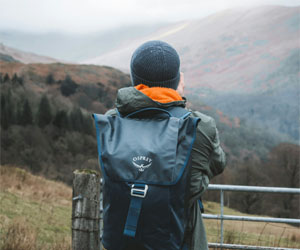
In a world increasingly dominated by human civilization, the allure of exploring untouched terrains holds an indomitable fascination. These pristine and unspoiled landscapes offer a captivating glimpse into the raw beauty and untouched majesty of our planet. Venturing into such uncharted realms is not only a journey of discovery, but also an opportunity to reconnect with nature in its most unadulterated form.
The Allure Of Untouched Terrains: The call of untouched terrains carries a magnetic pull that transcends generations. It promises a world untouched by human hands, a place where nature reigns supreme, and where the beauty of the wild remains unmarred by human intervention. It's an invitation to connect with the Earth on its own terms.
Preserving Pristine Beauty: Exploring untouched terrains comes with a profound responsibility: preserving the pristine beauty that makes them unique. Those who venture into these areas understand the importance of minimizing their impact, adhering to Leave No Trace principles, and becoming stewards of the environment.
Remote And Rugged Landscapes: Untouched terrains are often found in remote and rugged landscapes. These areas are typically far from the conveniences of modern civilization, making exploration an adventure in itself. Whether trekking through dense rainforests, traversing arid deserts, or summiting towering peaks, the journey is as much a part of the experience as the destination.
Wildlife Encounters: Exploring untouched terrains often leads to remarkable wildlife encounters. These areas are havens for diverse and often rare species of animals and plants. Observing these creatures in their natural habitats is a privilege that fosters a deep connection with the natural world.
Challenges And Self-Discovery: The challenges posed by untouched terrains are opportunities for self-discovery. Navigating rough terrain, facing unpredictable weather, and dealing with unforeseen obstacles are part of the journey. These experiences test one's resilience, resourcefulness, and adaptability.
Silence And Solitude: In untouched terrains, silence is your companion, and solitude your confidant. The absence of human-made noise allows for a deeper connection with the natural world and provides an opportunity for introspection and reflection.
A Symphony Of Senses: Exploring untouched terrains engages all the senses. The scent of pine, the rustling of leaves, the feel of untouched earth underfoot, the taste of fresh mountain air, and the sight of breathtaking vistas combine to create an immersive and sensory-rich experience.
Environmental Awareness: Untouched terrains foster a sense of environmental awareness. Witnessing the natural world in its purest state underscores the importance of conservation and sustainable practices. Many who explore these areas become passionate advocates for protecting the wild.
Exploring The Unknown: Venturing into untouched terrains is not just an act of exploration but an act of embracing the unknown. It's about stepping into a world where surprises abound, where every turn in the trail and every uncharted path offers the potential for discovery.
Exploring untouched terrains is a transformative journey that allows individuals to escape the trappings of modern life and connect with the Earth's unspoiled beauty. It's a call to venture into the wild, embrace the raw majesty of nature, and rediscover the profound connection that binds us to the untamed world. It is in these untouched terrains that the heart of the Earth beats in its purest form, and it is through exploration that we can witness its untamed beauty and stand as guardians of the pristine wilderness. So, heed the call, venture into the untouched, and embark on your journey into the uncharted realms of our planet.


A Natural Connection
 Mountain bikers have a unique advantage when it comes to exploring the outdoors. Unlike many other outdoor activities, biking allows riders to cover substantial distances, making it possible to reach less-accessible areas. These hidden gems often remain untouched by hikers or other outdoor enthusiasts. For those who want to escape the hustle and bustle of city life, mountain biking provides an avenue to explore untouched natural landscapes that offer solitude and a profound connection with the environment.
Mountain bikers have a unique advantage when it comes to exploring the outdoors. Unlike many other outdoor activities, biking allows riders to cover substantial distances, making it possible to reach less-accessible areas. These hidden gems often remain untouched by hikers or other outdoor enthusiasts. For those who want to escape the hustle and bustle of city life, mountain biking provides an avenue to explore untouched natural landscapes that offer solitude and a profound connection with the environment.
The outdoor connection extends to the myriad of environments that mountain bikers can explore. From lush, green forests to arid, rocky deserts, the diversity of terrains is astounding. This variety ensures that there's something for every rider, from those who seek the serenity of the woods to those who crave the challenges of technical rocky trails.
Furthermore, mountain biking fosters an environmentally conscious approach to outdoor exploration. Riders understand the importance of preserving the natural environment and following the principles of "leave no trace." They avoid disturbing wildlife, refrain from littering, and respect trail rules and guidelines. This responsible approach ensures that the beauty of the outdoors remains intact for future generations.
A Journey From Novice To Pro
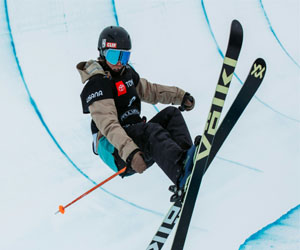 Balance: Maintaining proper balance on your skis is essential. Learn to distribute your weight evenly and stay centered on your skis.
Balance: Maintaining proper balance on your skis is essential. Learn to distribute your weight evenly and stay centered on your skis.
Turning: Start with basic wedge turns, also known as snowplow turns. As you progress, aim to transition to parallel turns, where both skis move together smoothly.
Stopping: Perfecting your stopping technique is crucial for safety. Master the art of the snowplow stop before progressing to more advanced methods.
2. Progressing To Intermediate Level
Once you've established a solid foundation, it's time to advance your skills:
Carving: Carving involves using the edges of your skis to create smooth, controlled turns. Focus on edging and weight distribution to perfect your carving technique.
Terrain Variety: Experiment with different types of slopes, from groomed runs to more challenging terrain. Learning to navigate varying conditions will broaden your skiing skill set.
Speed Control: Advanced skiers have precise control over their speed. Work on your ability to increase or decrease your velocity as needed, enhancing your overall mastery of the mountain.
Key Sports Injury Prevention Principles
 1. Warm-Up And Cool-Down: The warm-up and cool-down routines are fundamental to injury prevention. A proper warm-up involves light aerobic exercises, dynamic stretching, and mobility drills to prepare the body for physical activity. The cool-down includes static stretching and gentle exercises to gradually decrease heart rate and prevent muscle tightness.
1. Warm-Up And Cool-Down: The warm-up and cool-down routines are fundamental to injury prevention. A proper warm-up involves light aerobic exercises, dynamic stretching, and mobility drills to prepare the body for physical activity. The cool-down includes static stretching and gentle exercises to gradually decrease heart rate and prevent muscle tightness.
2. Strength And Conditioning: Maintaining overall body strength and conditioning is crucial to injury prevention. A well-rounded strength training program helps stabilize joints, improve muscle balance, and enhance overall physical resilience.
3. Flexibility And Mobility: Flexibility is key to injury prevention. Incorporating regular stretching exercises into your routine improves joint range of motion and reduces the risk of muscle strains and tears. Dynamic stretching before activity and static stretching afterward are both beneficial.
4. Proper Technique And Form: One of the primary causes of sports injuries is incorrect form and technique. To prevent injuries, athletes should receive proper coaching to ensure they are using correct form when participating in their sport.
5. Gradual Progression: Avoid the temptation to push your limits too quickly. Progress should be gradual and based on your current fitness level. Rapidly increasing the intensity or duration of workouts can lead to overuse injuries.
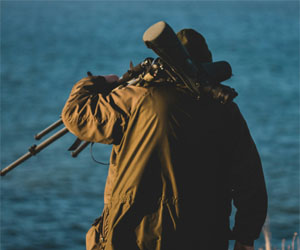


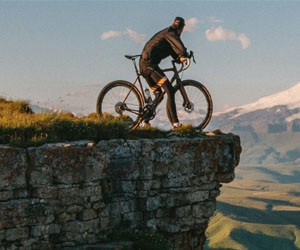

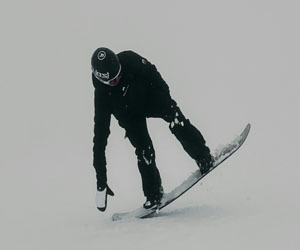
Paintball Skill Development
 2. Stealth And Camouflage
2. Stealth And Camouflage
Paintball involves a fair amount of sneaking around and avoiding detection. Developing stealth and camouflage skills is vital for staying concealed and moving quietly on the battlefield. Use natural cover, stay low, and minimize noise to enhance your stealth abilities.
3. Speed And Agility
Paintball requires a level of physical fitness, particularly speed and agility. Quick movement, sharp reflexes, and the ability to change positions rapidly can help you evade opponents and seize advantageous locations. Regular cardiovascular and strength training can enhance your overall fitness.
4. Communication And Teamwork
Effective communication and teamwork are essential for success in paintball. Being able to coordinate with your teammates, share information about enemy positions, and work together seamlessly is a fundamental skill. Practice using radios, hand signals, or verbal cues for clear and timely communication.
5. Tactical Awareness
Understanding the tactics and strategies that apply to different game scenarios is a key paintball skill. Familiarize yourself with a variety of tactics, such as flanking, cover fire, and suppression, and adapt them to your team's objectives and the field's layout.
6. Adaptable Strategy
Developing adaptable strategies is crucial because no two paintball games are the same. The ability to adjust your tactics on the fly in response to the evolving situation is a hallmark of a skilled player.
7. Resource Management
Paintballs are finite resources, and learning to manage them effectively is essential. Don't waste shots unnecessarily, and conserve your ammunition for critical moments.
8. Decision-Making Under Pressure
The heat of battle can be intense, and maintaining composure is a vital skill. Practice decision-making under pressure to ensure that you make sound choices when the game is at its most intense.
 Nutrition And Diet: A well-balanced diet plays a crucial role in an athlete's physical improvement. Proper nutrition ensures that the body receives the necessary fuel to perform at its best, recover, and build muscle. Athletes often work with nutritionists to tailor their diet to their specific needs.
Nutrition And Diet: A well-balanced diet plays a crucial role in an athlete's physical improvement. Proper nutrition ensures that the body receives the necessary fuel to perform at its best, recover, and build muscle. Athletes often work with nutritionists to tailor their diet to their specific needs.
Rest And Recovery: Intense training puts strain on the body, and adequate rest and recovery are vital. This includes getting enough sleep, incorporating rest days into the training schedule, and using recovery techniques like massage and stretching.
Personalized Training Plans: Not all athletes are the same, and their training plans should reflect this. Tailored training programs, often designed with the help of coaches or trainers, consider the athlete's current physical condition, goals, and weaknesses.
Monitoring Progress: Regular assessment of progress is essential. Athletes use metrics such as performance data, body measurements, and feedback from trainers to track their improvement. These insights guide necessary adjustments to training and nutrition plans.
Mental Resilience: Physical improvement isn't just about the body; it's also about the mind. Athletes must develop mental resilience to push through challenges, setbacks, and plateaus. A positive attitude and strong mindset are key assets on this journey.